Two weeks ago, I rhetorically asked if investors should be buying into the cyclical recovery theme (see Buy the cyclical and reflation trade?). Global green shoots of recovery were appearing, but I identified the “uncertainty of additional fiscal stimulus” as a key risk to the cyclical rebound thesis. Now that Biden appears to be winning the White House, but constrained by a Republican-controlled Senate, it’s time to revisit the recovery question.
Regular readers know that I consider the global economy as three trade blocs, NAFTA, Europe, and Asia dominated by China. It is within that framework that I examine the global reflation question.
Is the global economy emerging from a global recession?
Europe: A new lockdown
Let’s start with the bad news. Europe is experiencing a surge in COVID-19 cases. Member EU states have responded by going into lockdown. The worse afflicted are the Czech Republic, France, and Spain. Even Sweden, which was the poster child for light restrictions, is not immune to the second wave.
Bloomberg reported that the European Commission downgraded the growth forecast for 2021.
Europe’s economy, freshly battered by coronavirus restrictions, is facing a sluggish recovery next year that leaves it open to rising company failures and long-term unemployment.
The European Commission said the euro-area economy will grow 4.2% in 2021, less than previous anticipated. It sees a shallower recession this year, though that doesn’t include the latest government lockdowns, which could push some of the region’s biggest economies back into recession.
“Europe’s rebound has been interrupted due to the resurgence in Covid-19 cases,” Paolo Gentiloni, EU commissioner for the economy, said in a statement. “In the current context of very high uncertainty, national economic and fiscal policies must remain supportive.”
The stock market hasn’t reacted to these dire forecasts. The analysis of sector internals tells a different story. Cyclical sectors, such as industrials and consumer services are outperforming the market. Basic Materials stocks are tracing out a relative uptrend in a way that is similar to the Materials sector in the US.
Why?
There’s a new sheriff in town
That’s because a new sheriff has come into town. (No, it’s not Joe Biden.) it’s China as a source of growth.
A glance at the chart of global relative performance shows that US markets were the former leaders but starting to weaken. Other developed markets, like Europe and Japan, have been trading sideways relative to the MSCI All-Country World Index (ACWI). It is China that has emerged as the new leadership (bottom panel).
On a relative basis, MSCI China has outperformed the S&P 500 this year, and Chinese technology stocks have beaten the NASDAQ 100, albeit in a choppy manner.
Within the US, the China Exposure Index, which measures the returns of US stocks exposed to China, has performed well.
China’s economic recovery has proved to be a source of global demand that has become the locomotive for a global recovery. To be sure, the rebound was powered by a credit-fueled boost to production and not household consumption. Nevertheless, there is a strong lead-lag relationship between China’s credit impulse and German manufacturing PMI. Strength in China begets German, and therefore eurozone growth.
As the China bears’ favorite chart shows, the debt buildup is unsustainable, but that’s a problem for another day. Today, we party, and worry about tomorrow later.
No Blue Wave = Fiscal cliff?
Turning to the US, the markets had been anticipating a Blue Wave, where the Democrats sweep the White House, Senate, and House in the election. Such an outcome would have produced a large fiscal stimulus plan to boost domestic demand. Instead, Biden eked out a marginal win in the election. Any plans of significant fiscal expansion have been handcuffed by a Republican-controlled Senate. The hopes of the American consumer becoming a significant source of renewed global demand in 2021 were dashed on November 3. The markets melted up in the wake of the election. Has the narrative changed? What happened?
The analysis of market factors tells the story. As we approached the election, market anxiety rose, as evidenced by a steady rise in the 1-month VIX against the 6-month VIX. As well, the market began to anticipate the growth boost provided by a large fiscal stimulus of a Democratic sweep, as shown by a steepening 2s10s yield curve. Growth had been dominating Value but they lost their mojo as we approached the election. and growth/value traded sideways.
When it became evident that Biden was likely to be the new President, and the Republicans control the Senate, the narrative changed. Growth stocks rebounded strongly. As Big Tech stocks (technology, communication services, and Amazon) comprise about 44% of the S&P 500, the index soared. The market internals of the rally tells the story of narrow leadership. Even as the S&P 500 surged by over 2% on Wednesday, declining volume outpaced advancing volume on the NYSE. This has never happened before, ever! In other words, the market isn’t rising, Big Tech and Growth stocks are rebounding.
Here is the glass half-full market narrative for equity bulls. Without Trump, the risk of protectionism and trade wars will recede. Investors can look forward to little or no tax hikes, and a legislative status quo. The government’s approach to pandemic control will be more scientifically based, and there is hope for one or more vaccines just around the corner. In addition, the Washington Post reported that Senate Majority Leader Mitch McConnell has opened the door to a compromise stimulus bill of about $1 trillion during the lame-duck Senate session.
As well, the Democratic sweep narrative is not entirely dead. Republican Senate control is not necessarily a done deal. The two Georgia seats are headed to a run-off election on January 5, 2021, and there is an outside chance that the Democrats could capture both seats. While I am not holding my breath for that outcome, it does represent a possible bullish surprise for the fiscal stimulus-induced cyclical rebound theme.
Key risks
The main risk to the outlook is how the world deals with the pandemic. Fed watcher Tim Duy made an important point that the surprising strength in US retail sales is deceptive because of a shift in spending away from services towards goods. When you’re stuck at home, you spend more on goods than services, which often involve face-to-face interaction. Until the pandemic comes under control, the service sector will have a hard time recovering.
The IMF has projected global GDP growth under upside and downside scenarios.
Under the upside scenario, it is assumed that all things in the fight against COVID-19 go much better than assumed in the baseline. On the treatment front, advances quickly start to reduce the fatality rate, reducing fear and helping to restore confidence. An early and substantial ramp-up in investment in vaccine production capabilities and cooperation agreements in the associated global supply chain lead to earlier, widespread vaccine availability. Complete openness and transparency in the underlying science increase confidence in vaccine efficacy and safety, leading to widespread vaccinations. All these advances will allow activity in the contact-intensive sectors, which have been most adversely affected, to bounce back more quickly than assumed in the baseline. In addition, the overall improvement in confidence will lead to higher spending across other sectors as uncertainty about future income prospects subsides. More buoyant activity will in turn lead to improved prospect for firms and less deterioration in fiscal positions, driving an easing in risk premiums. Further, the faster bounce-back will lead to fewer bankruptcies, less labor market dislocation, and a milder slowing in productivity growth than assumed in the baseline. The improvements in these supply side factors start in 2023 and grow. On the policy front, with the improvement in activity, fiscal withdrawal is assumed to be only in terms of automatic stabilizers, and monetary authorities everywhere are assumed to be able to accommodate the faster growth without imperiling their price stability objectives. Panel 2 in Scenario Figure 2 contains a decomposition of the impact on global GDP of the three key layers under the upside scenario.
Here is the downside scenario.
For the downside scenario, it is assumed that measures to contain the spread—either mandated or voluntary—slightly increase the direct drag on activity in the second half of 2020 as the virus proves more difficult to contain. Further, it is assumed that in 2021 progress on all fronts in the fight against the virus proves to be slower than assumed in the baseline, including progress on vaccines, treatments, and adherence to social distancing guidelines to contain the virus’s spread. This leads to a deterioration in activity in contact-intensive sectors, with the associated income effects spilling over to other sectors. These domestic demand effects are then amplified via trade. Financial conditions are also assumed to tighten, with corporate spreads rising in advanced economies and both corporate and sovereign spreads widening in emerging market economies. The increase in 2020 is quite mild but grows to be more substantive in 2021 as the weakness in activity persists. Financial conditions gradually return to baseline beyond 2022. Fiscal authorities in advanced economies are assumed to respond with an increase in transfers beyond standard automatic stabilizers, while those in emerging market economies are assumed to be more constrained, with only automatic stabilizers operating. Monetary authorities in advanced economies with constraints on conventional policy space are assumed to use unconventional measures to contain increases in long-term interest rates. The more protracted weakness in activity is assumed to create additional, persistent damage to economies’
There is considerable variation between the two extreme outcomes. The local economy could recover strongly starting in 2021, or it could be mired in a period of slow growth for years.
I would also be remiss without highlighting my tail-risk warning of a Chinese invasion of Taiwan (see Emerging tail-risk: An invasion of Taiwan). China recently issued an ominous “Don’t say I didn’t warn you” (勿谓言之不预也) warning to Taiwan through official media. Similar language had been used as a prelude to past conflicts. The SCMP reported on October 18, 2020 that China is preparing for war by upgrading its missile bases.
Beijing is stepping up the militarisation of its southeast coast as it prepares for a possible invasion of Taiwan, military observers and sources have said.
The People’s Liberation Army has been upgrading its missile bases, and one Beijing-based military source said it has deployed its most advanced hypersonic missile the DF-17 to the area.
“The DF-17 hypersonic missile will gradually replace the old DF-11s and DF-15s that were deployed in the southeast region for decades,” the source, who requested anonymity, because of the sensitivity of the topic. “The new missile has a longer range and is able to hit targets more accurately.”
As an illustration of the seriousness of the threat, the article showed a picture of China’s Southern Command Centre, which featured a prominent 3D relief map of southern Taiwan. This is an important indication that China is putting together the capability to invade, though the political will is uncertain. I reiterate that an invasion of Taiwan represents an elevated tail-risk to the bull case, but it is not part of a base case scenario.
China wants smoother ties with America, said the official. But given their deep roots, present-day tensions will be hard to reverse unless America comes to a new understanding of the world. Westerners are a self-centred and judgmental lot, he charged. They never expected the Chinese—a diligent, studious people—to rival them so soon. No matter which party runs Washington, the official said, “The us has to answer this question: can the us or the Western world accept or respect the rise of China?”
The verdict
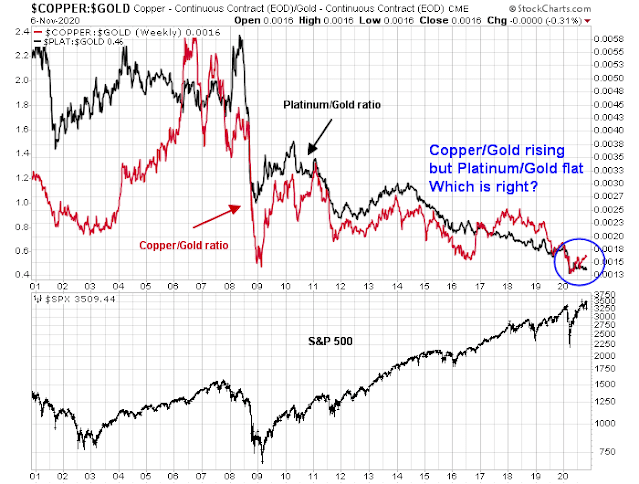
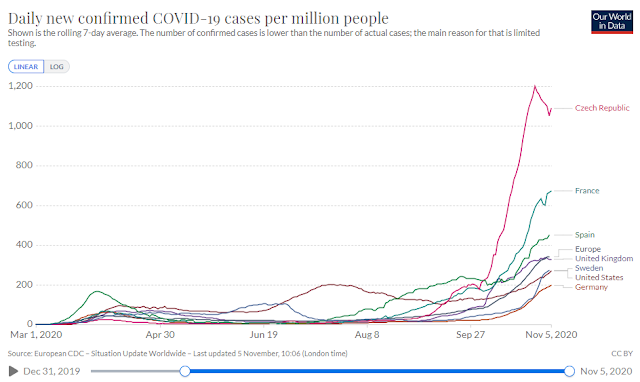
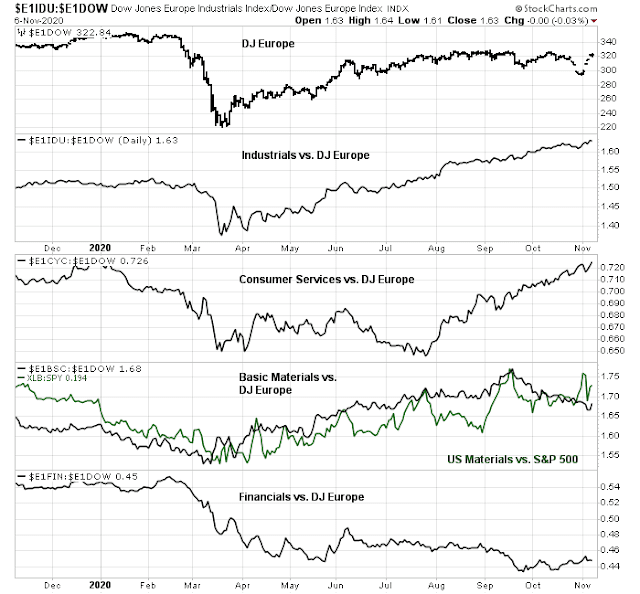
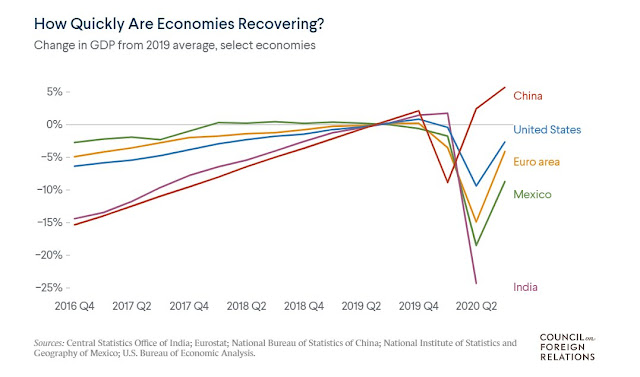
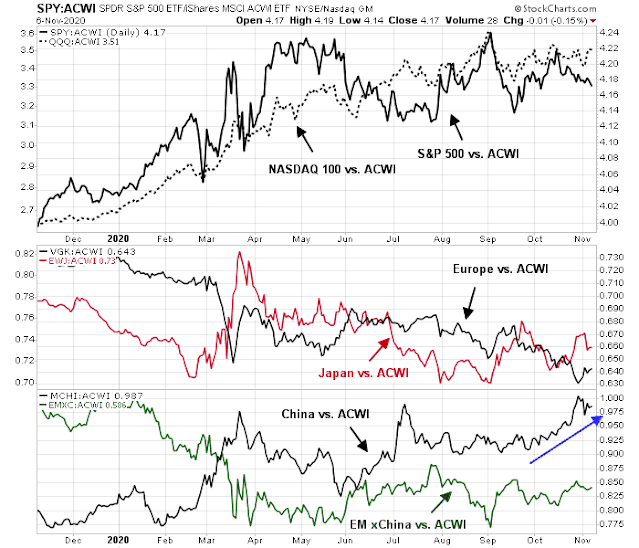
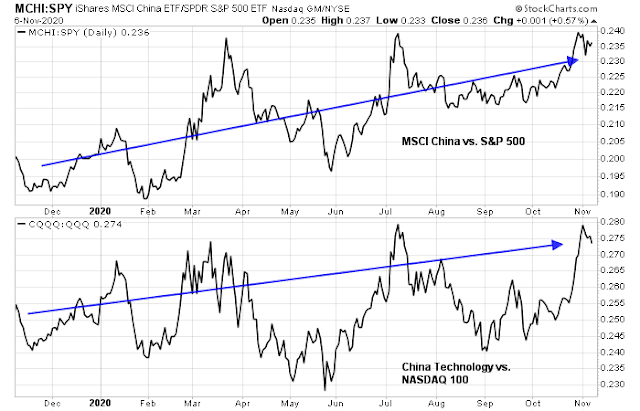
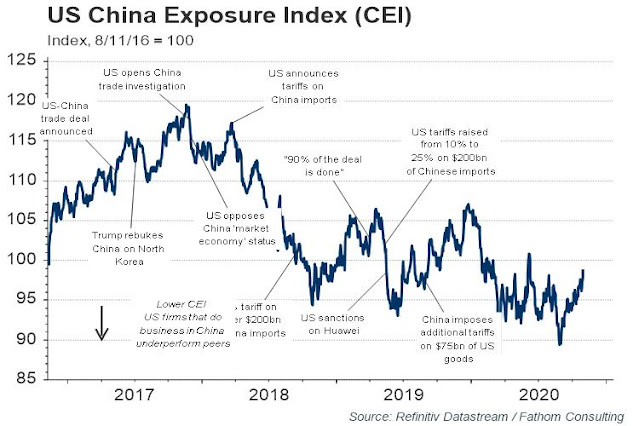
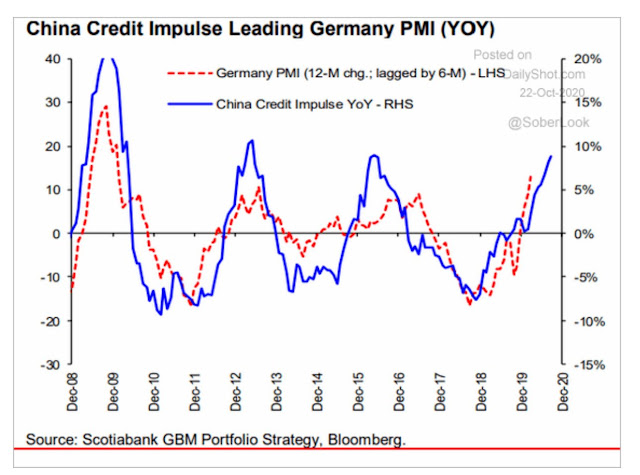


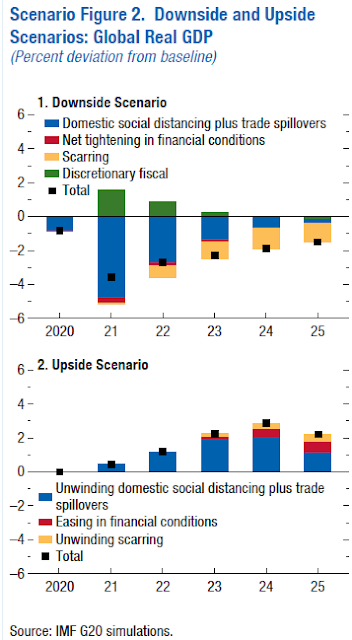

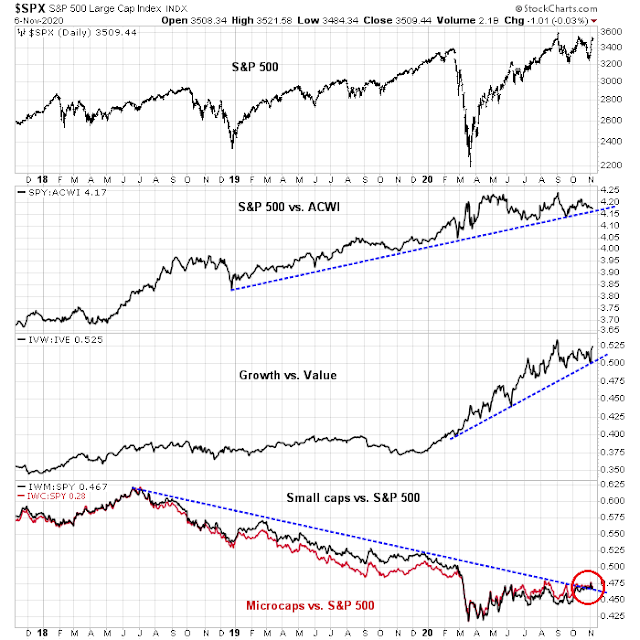
The biggest risk to a US shift to cyclical stocks is an exponential rise in Covid cases similar to what’s happening in Europe. Starting from from a much higher base, the US outcome will be be very tragic. In my mind, the European experience shows that behavior is the main problem not just government policy. People in the West are freedom-loving, impatient, overconfident, stubborn and the young are rebellious. Against the virus, these are bad.
The US spread will be energized by lack of social distancing around the election, Thanksgiving, Christmas shopping and Christmas holiday get-togethers.
This is a key reason to favor Asian investments since behavior regarding the virus there is very different and extremely successful.
Near term I wonder how Trump will behave. Will he be gracious or obstructionist? This could push back fiscal stimulus if he refuses to sign off on things.
How he will behave? I don’t know, but what does he have to lose at this point?
Well we shall see.
But for me, this is a near term wild card.
In 2016 we had what became called the Trump Bump, will we now experience a Trumper Tantrum? It won’t take long to find out.
Banks soared in the Trump Bump. Last week they crashed underperforming the S&P 500 by 9%. Take a look at this momentum chart;
https://tmsnrt.rs/36vuKQT
Is that the Trumper Tantrum?
The more President Trump is ‘pressed’ to concede, the less he is likely to cooperate. I say that let him have his day in court and the recounts. He will run out of options quickly. He may then try to cut a deal or two before he leaves.
He has a long list of people he wants to pardon. That is how he will keep busy.
Here are some early momentum patterns when I rebased to the election day (first day of performance the next day).
The outperformers are generally those that were best up to September 30. This why the Momentum ETF SPMO looks like this chart.
https://tmsnrt.rs/2JMmJ0i
And Growth, Technology and Internet
https://tmsnrt.rs/2NgC4aW
https://tmsnrt.rs/2JMWAOT
https://tmsnrt.rs/2WOitCV
Plus China and especially China Consumer
https://tmsnrt.rs/2WEcKz9
https://tmsnrt.rs/3khBWq9
Failures are previous underperformers still struggling; Banks (extreme), Transportation (bad), Pharmaceuticals (bad) REITs (bad) and of course Energy is a disaster.
https://tmsnrt.rs/36vuKQT
https://tmsnrt.rs/2pCC3Wn
https://tmsnrt.rs/36tSIvV
https://tmsnrt.rs/2oIC0rH
https://tmsnrt.rs/2qdu3uV
Strange new failure since the election is Home Construction that had been doing great.
https://tmsnrt.rs/2CbgQFz
Still early days but Biden without the Senate is looking like fiscal stimulus will be limited and economically sensitive sectors won’t perform as well as growth.
When in doubt, the Momentum ETF (SPMO) is a likely solid performer in a bull market.
Nov 1 there was a new fee added to mortgage financing of 1/4% and the rates edged up another 1/8th so in total 3/8th bump Nov1….could be the reason. I know because I am doing refis and got in just before
Nope, I would wait and see how he behaves in the coming weeks. Apparently he has not conceded defeat yet, that’s ok, it’s the weekend. There will be recounts of the close ones, but it is rare for a recount to change the outcome of the election. No I am more concerned about refusing to sign a bill presented to him that is sponsored by the democrats. What if there is no stimulus until after January 24th? Or even if on Monday it looks that way. Will the market shrug? I dunno.
The dollar went nuts the last few days, I would take that as low interest rates and QE, doesn’t that hurt bank profits? Or maybe anticipating the Dems giving them troubles, or maybe it just happened. There has been lots of S/R in the 90 to 92 range, will the $ bounce or is it heading a lot lower. What is different this time compared to other times that governments are printing is that everyone so to speak is doing it. Weimar Germany would have been different if France, Britain, Italy etc were all printing.
It’s the weekend, let’s enjoy it, Monday will come soon enough and we will see what happens.
Regarding East Asia situation, everyone is looking at China and US, but we should watch Japan more closely. I have a friend working at Rand and thru his courtesy I have the chances to read his reports (before release to US Gov) from the last two years.
Things are unfolding more or less like below.
1. Japan is trying amending its Constitution to raise the military budget much higher. The eventual goal is to completely remove the cap thru official language in the Constitution.
2. This is actively encouraged by US to counter China expansion.
3. Japan is currently on an expedited pace to convert many ships into medium aircraft carriers. These ships are superior to China’s carriers
4. Japan is producing his own F-35 versions. Very advanced aircrafts. Might use his own engines.
US and Japan are the top two naval powers in WWII, and have vast experiences in real battles. This is China’s biggest unknown. Nobody knows how good they are in real battles.
Japan has never stopped their military technology research (including nuclear tech) after WWII defeat, and all of their heavy industries are all set up in dual purpose. It can be converted into military use overnight. More importantly, Japan’s technology sophistication is really impressive, across all fronts, especially basic research. China is just several notches below.
US might finally release the shackles put on Japan. Is this good or bad? I don’t know. Watch how politics evolve in Japan. Check if right wings gain more power. Pay attention to how they officially amend its Constitution and how China reacts. Maybe it will bring peace due to MAD. Maybe China will do something.
Bush Sr. in his concession speech 28 years ago – ‘we respect the majesty of the democratic system’. This is what is happening in this country right now, President Trump notwithstanding. So much for riots, street corner gun battles and mayhem projections. Americans will get behind Mr. Biden, particularly if the Senate remains Republican. This may just be the start of a period of reduced tensions, compromise and civility that we sorely lost.
The skies are turning blue again. Vaccines will be here soon enough, confidence will return. Economic activity will increase and return to normal level by 3rd-4th quarter, 2021. I am investing for that macro outlook.